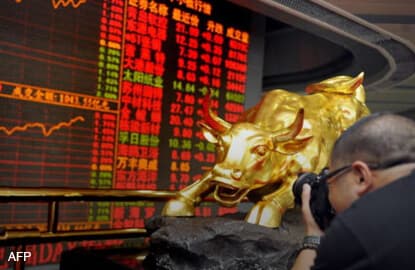
IS Donald Trump’s reflation sustainable?
A 10% stock-market rally, higher real asset prices, and higher bond rates clearly reflect expectations of tax cuts and stimulus-driven inflation.
Policymakers hope this trend will continue, and will do their best to sustain it. Worldwide non-financial debt is now about US$152 trillion (RM671.84 trillion), or 225% of gross domestic product (GDP). In the absence of default or strong growth, the easiest way out of that burden is inflation. Inflated earnings would make fixed servicing commitments manageable, reduce the purchasing power of the debt and boost the value of real assets used to secure borrowings, thereby reducing the risk of loan losses.
Falling prices and high debt, moreover, are a potentially toxic combination. Deflation may encourage deferral of spending, reducing economic activity. It would reduce income, revenue and tax receipts, making it more difficult to service debt, which would also increase in real terms.
But there is reason to doubt that governments can generate inflation as they assume they can.
For one thing, inflation has side effects, secretly transferring wealth from savers to borrowers, particularly when interest rates are held artificially low as they have been since 2009. Higher prices do not benefit those on fixed incomes, such as retirees. In Japan, falling prices have helped preserve the purchasing power of those whose incomes have remained static or shrunk. Such effects will make sustaining higher prices politically difficult.
Economic forces will make it harder still. In the latter half of 2016, inflation rates in developed economies rose from nearly 0% to 0.5%. Inflation expectations increased sharply to 1.5%. But these increases are misleading. One problem is that the low rate of inflation in recent years has distorted the models used to assess real price levels, meaning that today’s favourable readings may be illusory. Another is that a rebound in commodity prices, especially oil, may be short-lived.
Higher commodity prices are reliant on Chinese demand, which is increasingly being supported by risky debt-fuelled investment. Oil prices have been driven higher by production cuts recently announced by Opec, yet countries such as Iran and Russia may not comply with these cuts. Higher US shale oil and gas production may offset reduced production elsewhere.
More crucially, demand remains weak. Growth in US personal consumption, at about 1.6%, is below trend, held back by low-income growth and job insecurity. US business investment, at around 17% of GDP, is also weak and volatile. Aggressive government spending can create additional demand, but whether it is sufficient to offset turgid consumption and investment remains to be seen.
Cost pressures, meanwhile, are limited. US employment levels have recovered since 2009, but Europe’s labour markets have only improved marginally. Even the improvement in the US is more modest than commonly assumed. The so-called U-6 rate, which includes unemployment and underemployment, remains at 9.2% as of December, above the pre-recession level of 8.4%. Although the labour force participation rate has risen lately, to 62.7%, it is still below the pre-recession rate of 66%. Wage growth is muted. Recent increases in average weekly earnings are affected by fewer hours’ worked and large raises for managerial positions.
Changing industrial structures are likely to further restrict price pressures. Global supply chains can accommodate increased demand using lower-cost overseas resources, thus alleviating domestic wage pressures. Many industries are now highly mechanised or capital intensive, meaning production is scalable without significantly changing costs.
Excess capacity will have a similar effect. Governments in many countries have used subsidies and industry assistance to avoid reducing overcapacity and to minimise job losses in important national industries, such as automobiles and steel. Many businesses are hesitant to increase prices and lose market share under such conditions. Overinvestment in emerging markets, especially China, transmits disinflationary pressure through lower prices for produced goods and currency devaluations.
Monetary tools alone cannot offset all these trends. Increases in money supply have been substantially offset by reduced velocity or circulation of money. The liquidity supplied is in many cases being held by banks as excess reserves with central banks. This reflects a lack of credit demand and unwillingness to lend due to capital constraints, reduced banking leverage and onerous liquidity controls. Even where this money has flowed more widely, it has not significantly increased economic activity. Companies have taken advantage of low rates to raise long-term debt to refinance existing borrowing, undertake mergers and acquisitions, or repurchase shares. Globally, companies now hold large amounts of surplus cash, reflecting limited investment opportunities and caution about the future.
All this suggests a significant rerating of asset valuations and expected growth is likely. Current stock valuations assume strong growth in nominal earnings, yet slower inflation would undermine pricing power and profits. Higher bond yields and aggressive positioning for further increases also assumes inflation. Slower price increases risk triggering a significant short squeeze. Most important, a continuing lack of inflation should refocus attention on a crucial fact: Low nominal growth rates are incompatible with the world’s high and rising debt burden.
There is no easy way out of that problem. — Bloomberg